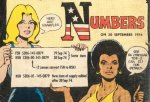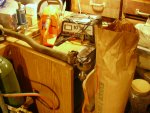alphadeltaromeo
Active member
- 1,901
- 3
- 38
- Location
- Alto, GA
Perhaps you're right on the money. However, it could be that the joint is clean because of the friction of the movement recently. It could also be that there was no penetration of any water over the years. Or perhaps it's just a poor design to begin with. I'm sure you'll get it all figured out, you're a real sharp MVr 
Have you thought of replacing the joint with a more modern design or do you want to stay original?
Have you thought of replacing the joint with a more modern design or do you want to stay original?




